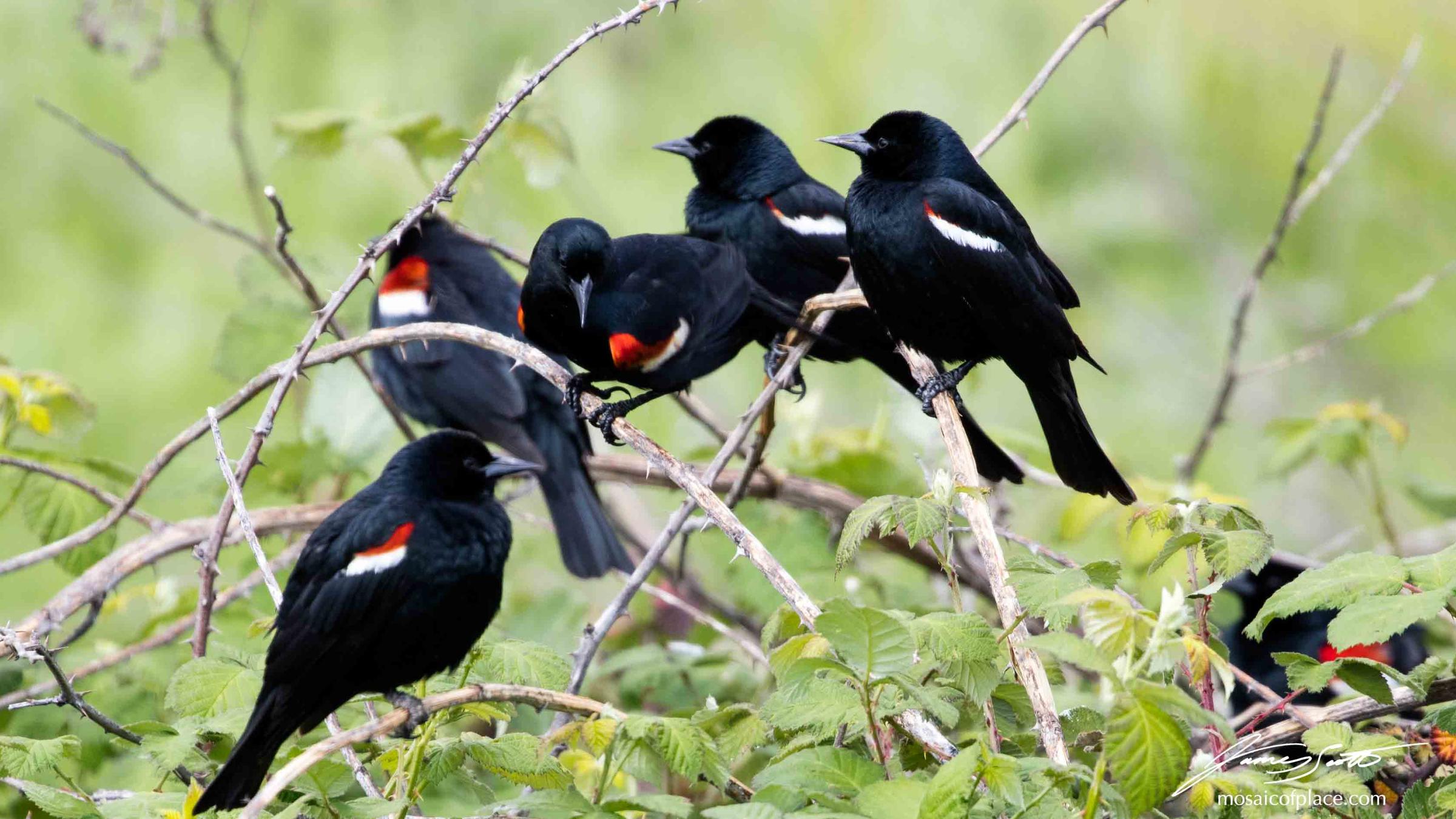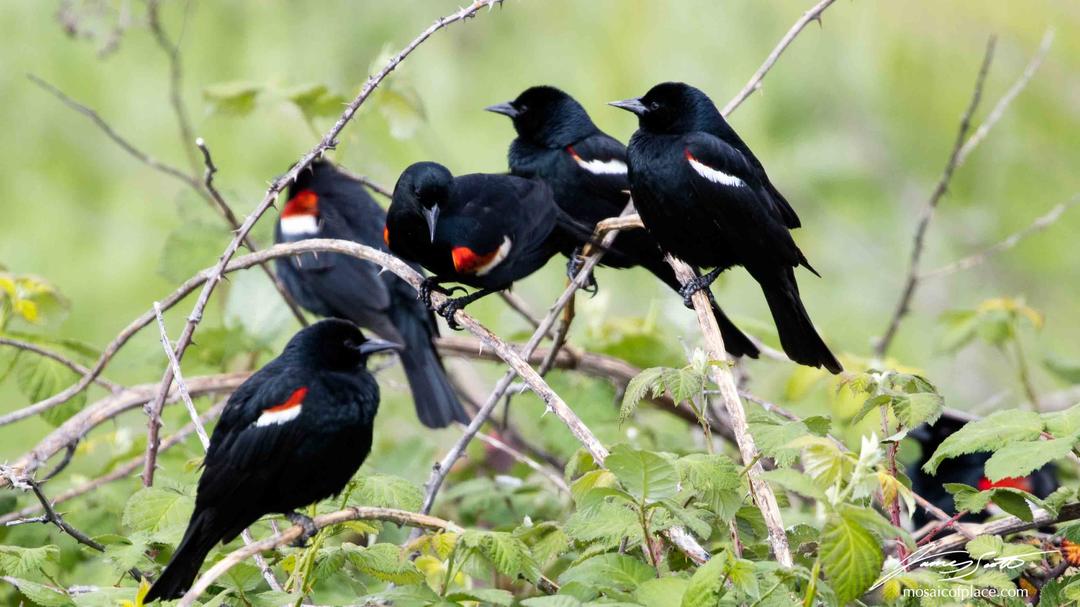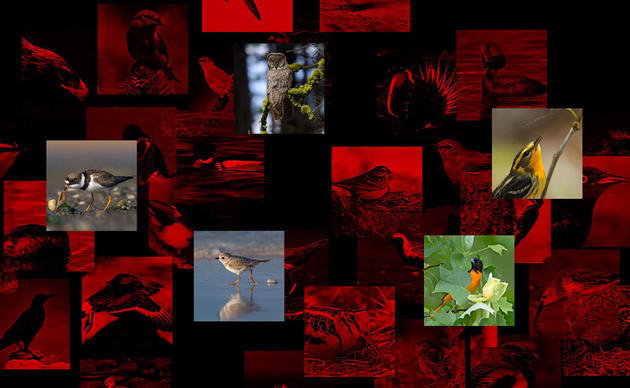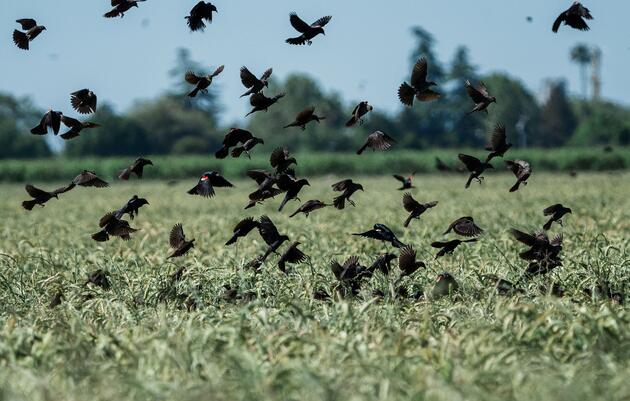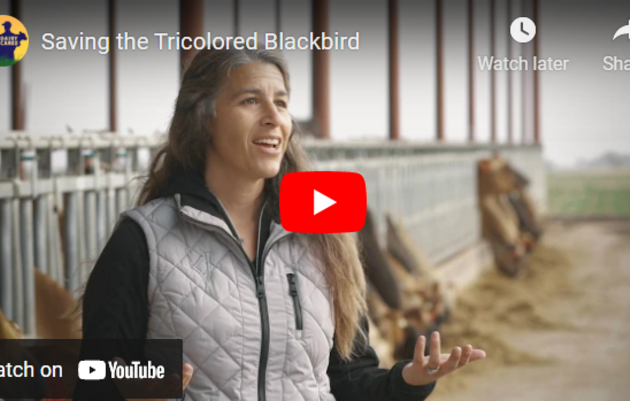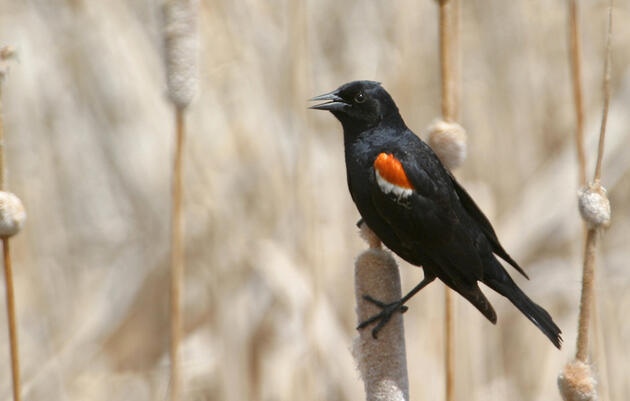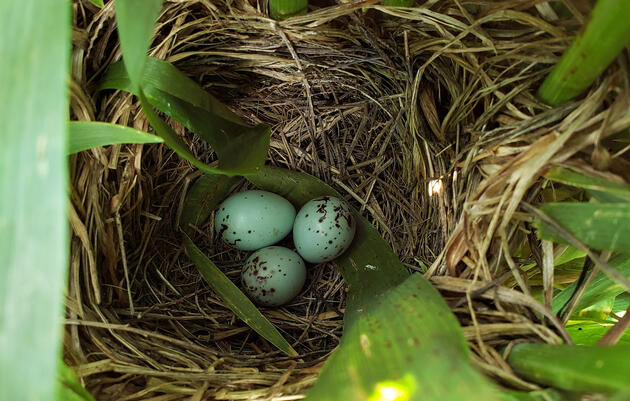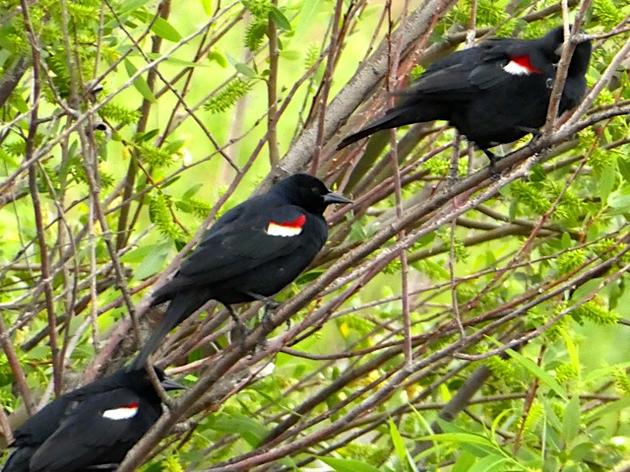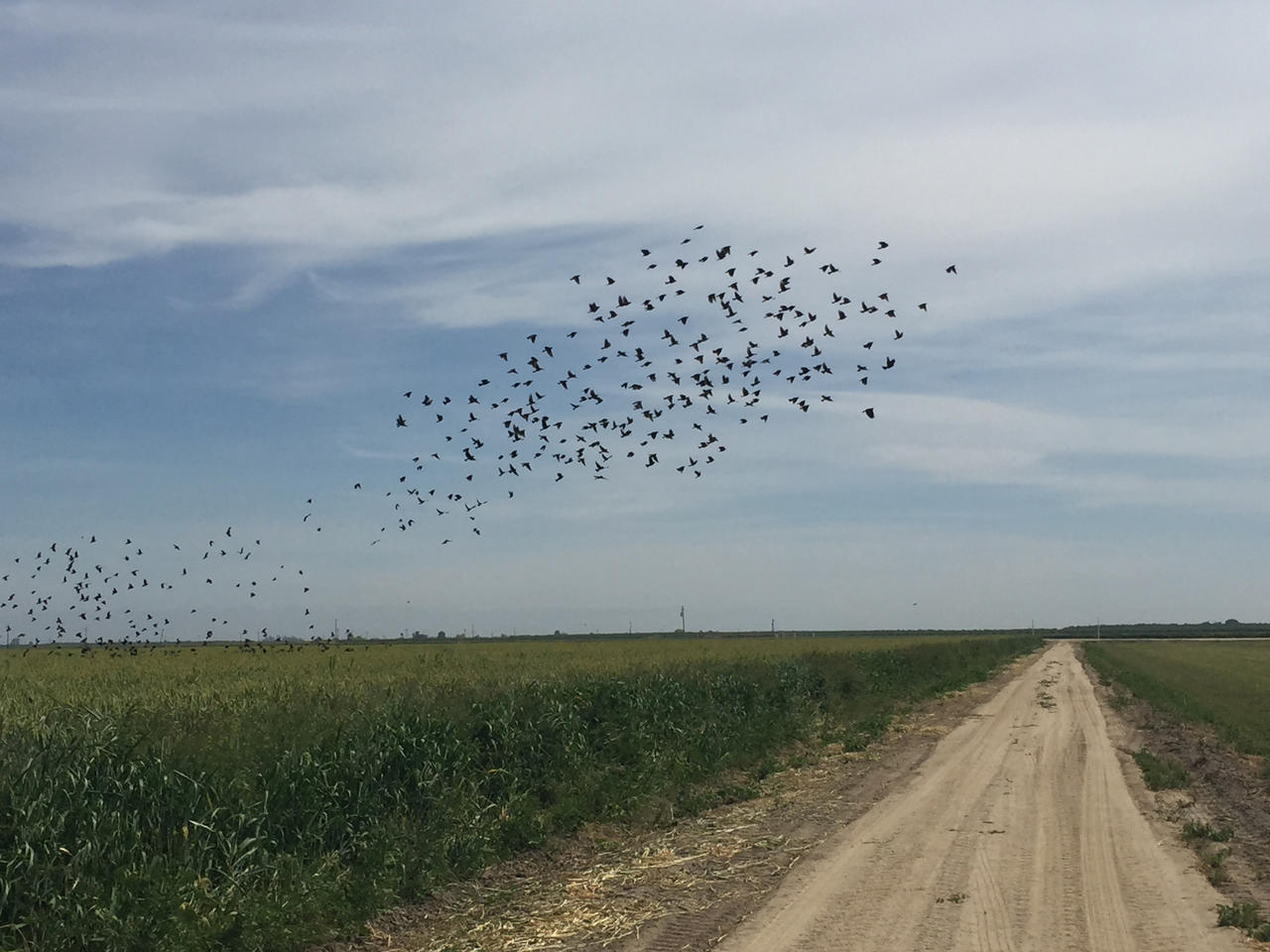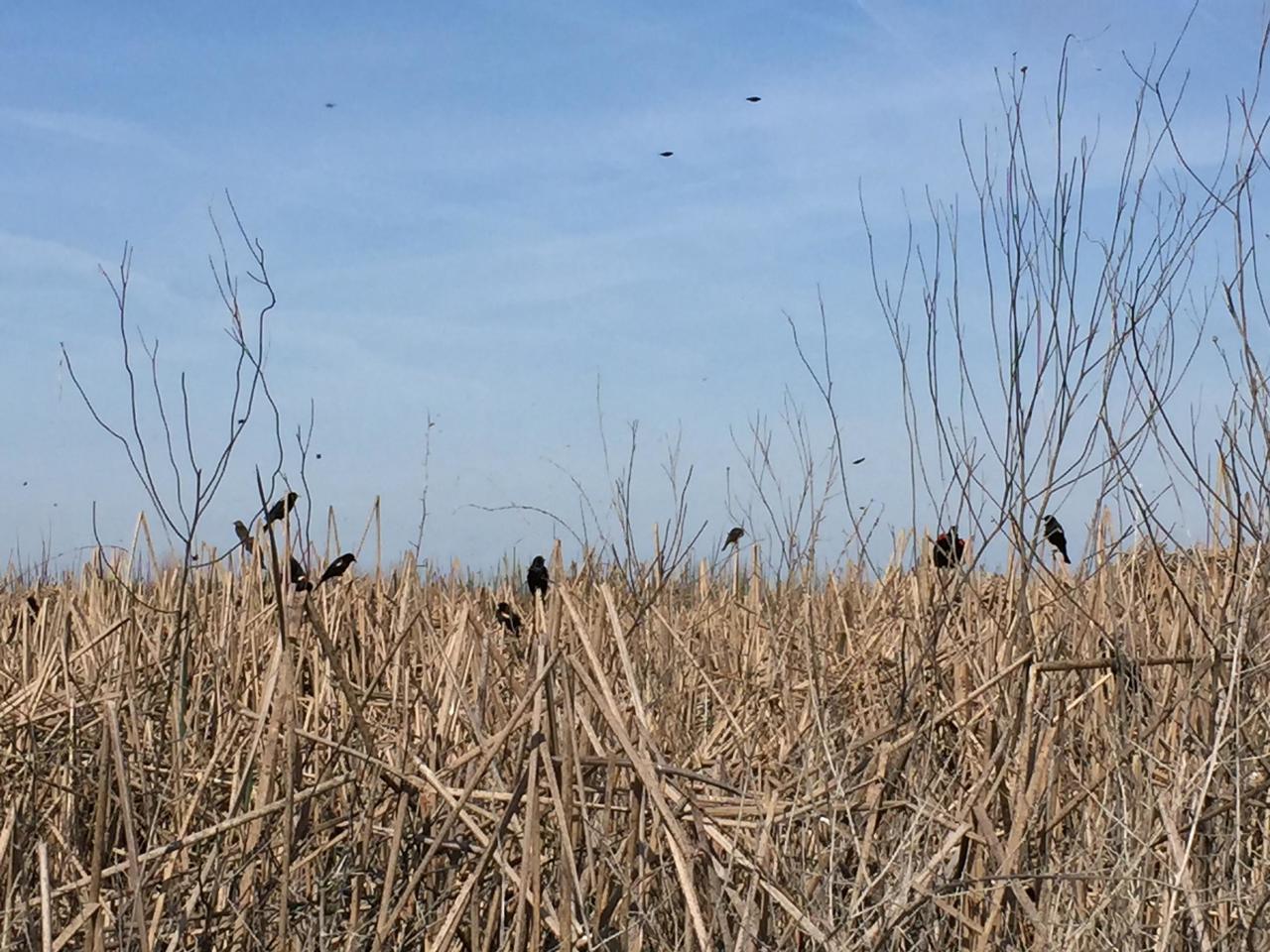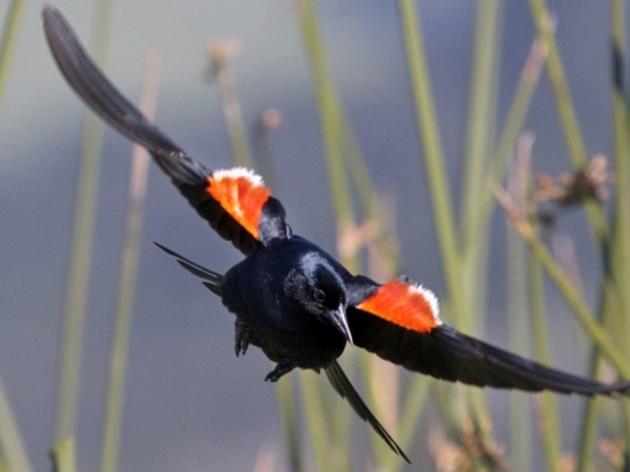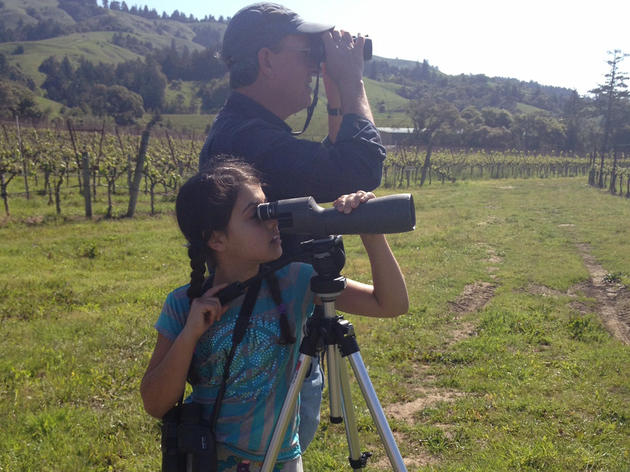The Tricolored Blackbird is North America's most colonial nesting landbird. Found almost exclusively in California, a single breeding colony can teem with over 35,000 birds, sometimes all settled into a single field or small wetland to raise their young. While similar to the more widespread Red-winged Blackbird, the male Tricolored Blackbird is distinguished by its red shoulder patch with a bright white wing-bar.
In the 19th century, Tricolored Blackbird flocks were described as numerous and often consisted of hundreds of thousands of birds. Since then, the population has declined from several million to approximately 177,000 today. Over a 10-year period from 2007 to 2016, it is estimated the population declined by as much as 34%.
There are many reasons for this decline. But the loss of native wetland and nearby foraging habitats along the coast and in the Central Valley is the main issue. In more recent years, the species has become dependent on agricultural lands, with most of the largest colonies nesting in grain fields. A real dilemma develops as Tricolored Blackbird young typically have not yet left the nest before the time farmers need to harvest their crop, and harvesting destroys Tricolored Blackbird nests and young. In some cases, tens of thousands of nests have been lost in a single field.
Each year, these birds gather in highly social colonies to raise their young throughout the San Joaquin Valley, Sacramento Valley, Sierra Foothills, Central Coast, and Southern California. However, with the continuing loss of habitat and the places they need to survive are becoming scarcer. As a result of this continued habitat loss and drastic population decline, Tricolored Blackbirds were recently listed under California's Endangered Species Act thus highlighting the recovery of this species is more critical than ever.
Audubon California's Xerónimo Castañeda shows us a great Tricolored Blackbird colony in the Central Valley.
Tricolored Blackbirds Once Faced Extinction—Here's What's Behind Their Exciting Comeback
For a decade Audubon California and partners have worked with farmers to delay harvests where the birds nest, solving what was once the biggest threat to the species.
Farmers Play Key Role in Protecting Tricolored Blackbirds
Watch this video by Audubon's partner Dairy Cares in the Central Valley
Collaborative Conservation
We work closely with landowners and partners in the Tricolored Blackbird Working Group to protect the Tricolored Blackbird across California.
How Private Landowners Can Save Tricolored Blackbirds
Farms and ranches will play a critical role in conserving Tricolored Blackbirds across the Central Valley.
Latest News
Tricolored Blackbird colonies setting up in the Central Valley
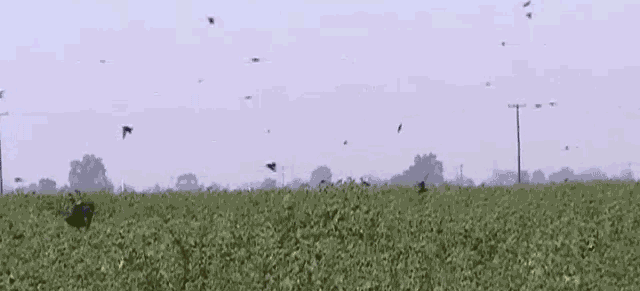
We're getting reports from our field team that at least five Tricolored Blackbird nesting colonies have been found on dairy farms so far this spring. We're working closely with the State Department of Fish and Wildife, the Natural Resources Conservation Service, and the Western Dairymen Assocation to contact the farmers and protect the nests. As we've discussed in the past, these colonies are in extreme danger when they nest on a dairy farm, because the farmers often need to harvest the field before the birds have fledged. Last year, we were able to protect every Tricolored Blackbird colony found on dairy farms, and that's our goal again this year.
Tricolored Blackbird surveyors out in the field this weekend
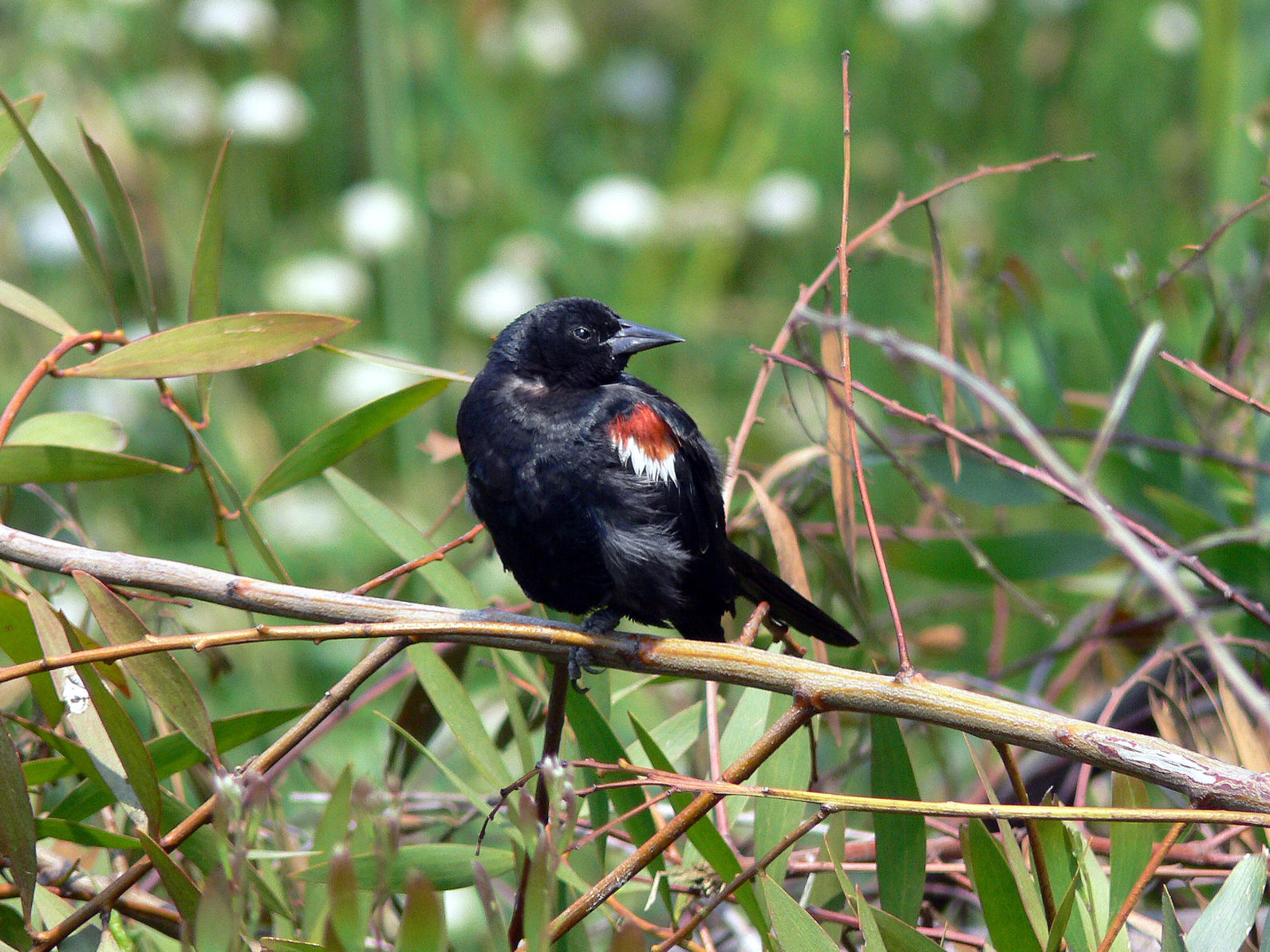
The beginning of nesting season is a great opportunity to get a read on the population number of Tricolored Blackbirds. This weekend, about a hundred surveyors are taking the field in locations throughout the state to count the birds. The survey is being led by our friends at UC Davis. Lots of Audubon volunteers and staff are taking part. While the bird has been sharply declining in recent years -- 44 percent since 2011 -- we're optimistic that we'll find more birds this year. Rains this year have made things much more hospitable for the birds. That said, Tricolored Blackbirds nesting on dairy farms will still be in danger if we're not able to arrange to have the colonies protected. Results from this year's survey will be available later this summer.
Tricolored Blackbirds in Fresno County. Audubon California's Samantha Arthurs is out looking for nesting flocks of Tricolored Blackbirds today, and she spotted this flock in Fresno County. Nesting season starts soon, and we're going to be out there again trying to protect this struggling species.
Tricolored Blackbirds in Tulare County
We're on the lookout for new Tricolored Blackbird colonies this spring. Our team found this one at Atwell Island in Tulare County, a BLM property with an NRCS habitat enhancement on it. We were struck by how much more water there is in the wetlands this year. Our estimate was about 10 K birds.
Tricolored Blackbirds revving up for nesting season. Yesterday, our team found a growing colony of Tricolored Blackbirds at Atwell Island in Tulare County, a Bureau of Land Management property where the Natural Resources Conservation Service has done some habitat enhancements to attract the birds. We were struck by how much more water there is in the wetlands this year. Our estimate was about 10,000 birds.
Interesting new research on the demise of the Passenger Pigeon
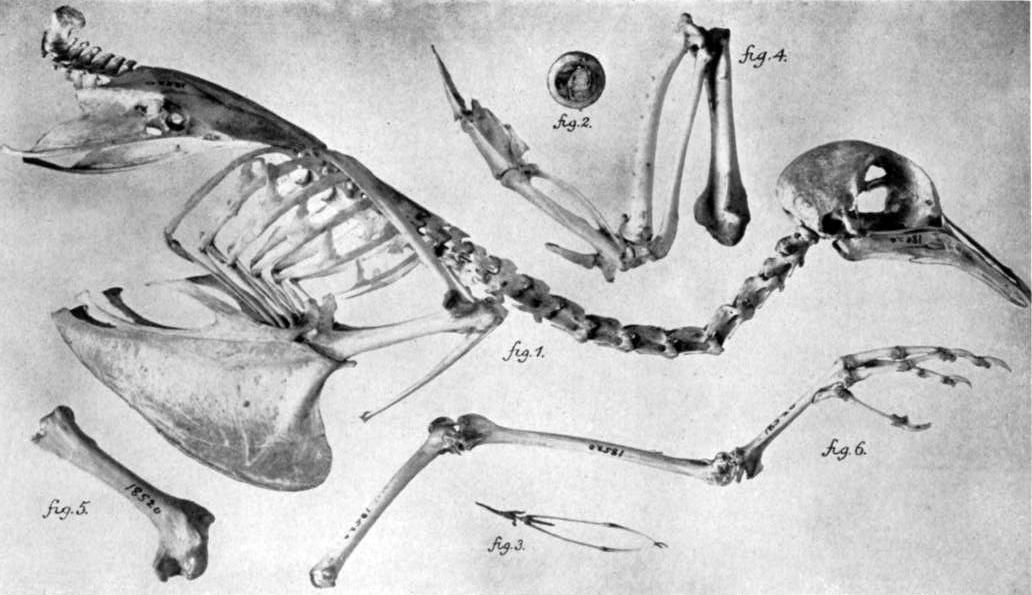
GrrlScientist wrote an excellent piece on Medium, "Passenger pigeon extinction: it’s complicated," about new research behind what led to the extinction of the Passenger Pigeon. It's an interesting look at the how population fluctuations and human-based causes led to the demise of a once abundant bird. There are certainly lessons to be learned and correlations to our own campaign to save the Tricolored Blackbird from a similar fate.
Tricolored Blackbird population at Atwell Island continues to expand
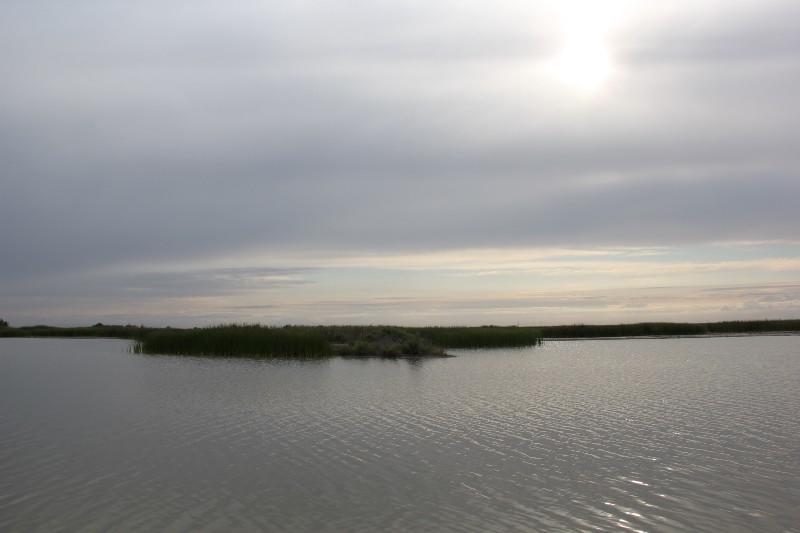
NRCS California reports that the Tricolored Blackbird population at Atwell Island, a restoration project run by NRCS in conjunction with Bureau of Land Management, has grown to 4,000 birds. Read their Medium story on the colony's success. It is encouraging to see other groups working hard, and seeing results in their efforts to save this imperiled bird.
How you can help, right now
Get Audubon CA in Your Inbox
Our newsletter is fun way to get our latest stories and important conservation updates from across the state.
Donate to Audubon
Help secure the future for birds at risk from climate change, habitat loss and other threats. Your support will power our science, education, advocacy and on-the-ground conservation efforts.
HOTSPOT: Flyover of California's Birds and Biodiversity
California is a global biodiversity hotspots, with one of the greatest concentrations of living species on Earth.

